An Analytical Eye in Growing Super6
2022 has been the first non-covid impacted year of FOSORC Super6 action.
Initially Super6 was always designed to have two competitions within the season however due to covid-19, the inaugural competition in 2020 was cut short and the Welsh Cross-Border competition fell as a consequence.
In 2021 a FOSROC Super6 Championship was run, and the first winners were crowned when Ayrshire Bulls overcame Southern Knights to lift the trophy for the very time.
This year a FOSROC Super6 Sprint Series took place in the Spring, with Watsonians running out winners and now, in October, a second Championship is almost complete with the victors decided this Sunday when the Watsonians take on Ayrshire Bulls.
As the Super6 competition has grown and developed to what it is now, so has the rugby on the pitch.
From the table below you can see the growth in points and tries scored* from the inaugural 2019-2020 Championship through to this year, although down slightly in 2021 due to players having more than a years’ break due to the pandemic.
| 2019-2020 | 2021 | 2022 | |
| Tries scored | 181 | 168 | 195 |
| Points scored | 1370 | 1347 | 1428 |
*Table shows points & tries scored after the 10 rounds of competition each year, due to covid-19 cutting the 2019-2020 season short
An area of the game that has helped both coaches and players grow and develop their game, is performance analysis and the packages, programmes, and resources available to them.
Week in week out all six teams, 192 players and their coaches get access to all games which are tagged by central Performance Analysts, collecting data on team and individual areas of the game.
The data is then compiled into statistical reports to help coaches and players make informed decisions on their performance.
As well as their own data, they also have access to see Super6 tournament trends and can drill down into data on any player in the competition. This resource allows coaches to view how their team performs in certain areas such as set piece success, average number of carries per game, and tackle completion – compared to the other five teams.
Watsonians Head Coach Fergus Pringle said: “The way in which its presented to us is great. As an example, there’s rankings based on all the different areas of defence, attack, kicking and set piece so it gives you an idea of where you are [in comparison to other teams].
“The key is being able to look at it all, use it in context and use it effectively, taking something out that you can practically use to monitor performance.”
Ayrshire Bulls Head Coach Pat MacArthur said: “The programmes available to us are brilliant. As a coach, it allows me to look at numerous games before we play them, I don’t look at one game, I’ll look at the past three or four games and see trends that are coming in, what moves they are likely to do and then flip that around.
“Before we play a team, I’ll look at our last couple of games and see where I would attack my team and that’s all done off the analysis software that’s there.”
Although all the information and data that is available is of use, both Pringle and MacArthur insist that a balance must be struck between the cold hard data and numbers and the human element to games. Pringle said: “In one way it’s a bit of a reinforcement, the way we play the game is reinforced when you look at the data.
“But I’m also so careful with numbers because you can get them to reinforce what you want them to say, there’s a balance in there as a coach as to what stats you use.
“They are useful and good, but you’ve got to use them in the right way and not go looking for stuff that’s not there. It’s a balance between having a critical eye, and eye for the game and then the stats.
“At the end of the day you are dealing with people, the players are people, you can’t always reduce the person to a number.
“Someone could have three involvements that change the game but if you looked at the stats you might not have noticed because you look at another player who is very busy with good stats across the board but their impact on the game doesn’t always get shown and transferred through the data.
“It’s a balance through looking at the stats but watching the game and knowing your team who brings what and how people combine together.”
MacArthur agrees: “It’s an important tool but you’ve got to be careful about how stats are run, I don’t pick teams on stats because being part of our team means that some boys have a job that isn’t stat heavy but that’s still their role within our team.
“I wouldn’t ever select or drop players purely on stats because sometimes they can do a huge amount of work out with it being shown in the data provided.
“I like to look at certain key stats and key measurements, what stats don’t show is the second efforts a lot of the time. I might focus in on a stat for a week, say that I think we need to improve on breakdown, it will show the ruck speed isn’t quick enough or too many turnovers or unforced errors.
“I’ve got my thoughts and notes on the game, I can go back and look at the stats and that can either confirm to me that that’s where I want to look at or maybe I’ve been hyper-critical in that area.
“It’s all about balancing stats to performance – that’s an area as a coach you have to understand, I don’t like to be a purely stat driven coach.”
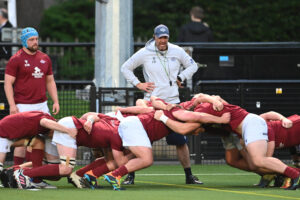
Watsonians head coach Fergus Pringle during the FOSROC Super6 match between Southern Knights and Watsonians (Photo by Paul Devlin / SNS Group)
Every game in the FOSROC Super6 is now broadcast live, with the extensive amount of resource put into production values and numbers of cameras on site. In turn this contributes to the performance analysis review points for coaches and players.
Although every game is recorded and filmed by Performance Analysts on-site, the production company for the tournament, QTV, also have up to four other camera angles which are utilised by performance analysts to provide a multi angle video package to coaches and players.
Multi angle video packages mean that coaches and players are able to review performance from both sides of the field, using the close camera angles to review events such as set piece and ball carry technique, or using the wider angles to review team shape in attack and defence.
MacArthur said: “The Friday night games [with four TV angles] are brilliant as it allows you to see the overall of what is happening on the pitch, you can look at the options around the park rather than just individual events, it’s great for play-makers and game management.
“Game management is my big one, how different teams cover the park how their defensive systems work and if it’s a tight angle you can’t see – the wide angles allow you to see who’s working hard off the ball.”
Whilst the benefits of seeing the data and different camera angles is a huge benefit to all players and coaches, it further benefits those likely to go into the professional game which is the main aim of Super6 rugby: to bridge the gap between amateur and professional.
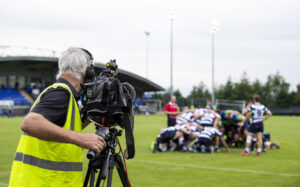
The analysis service provided to the Super6 clubs is in line with that which is provided to our age-grade, professional, and international squads allowing for a smoother transition for both coaches and players to move into the professional rugby environment following their time in Super6.
MacArthur commented on this saying: “With all games coded to individual players through set-piece collisions, turnovers, everything you want as a coach, that allows a much closer link to the professional game.
“I think that what a lot of people don’t understand is the amount of in-depth analysis that players and coaches do in the professional game, on opposition teams and on themselves.
“It allows the players to understand what the professionals do; they don’t have the same amount of time but they’re starting to see the overall picture of what being a professional player entails.
“It’s about the bigger picture as well as the detail, you can look at every single one of your clips, there’s no hiding place in rugby. Everything is tracked, you can see if your involvement isn’t high enough.”
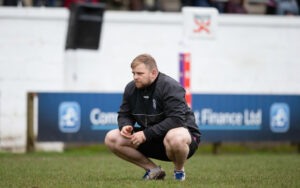
Ayrshire Bulls head coach Pat MacArthur during a FOSROC Super6 semi-final match between Ayrshire Bulls and Boroughmuir Bears (Photo by Ewan Bootman / SNS Group)
An added element that both coaches were keen to mention was the benefit the performance analysis programmes have had in helping deliver feedback to players.
Pringle said: “It’s a good tool to help players with, a great feedback tool. I will reinforce messages at times by showing certain statistics.
“I’ll go through it, change my angles go up close to things that go on through out the lineout and review both sides of the ball.
“Stats analysis, reviewing games and training all helps you in that process of trying to get better.
“I can clip up what I want and send bits out to individual players, for me that’s the side that’s made the biggest difference.
“Players always want to get better, improve and want feedback on how they can get better and using some of the packages that we’ve got access is so valuable. Being able to tag up a couple of clips from the pro-game to show the players what best practice and gold standard looks like in that skill, that’s great for their learning.
“It’s more about that, practically using it as a coach to review, preview feedback and interact with players as opposed to just numbers on a screen.
“The guys who get the most out of it are the guys who are really keen on it. It [how they use it] changes from player to player, as coaches we’ve got to be careful of in our minds as coaches saying, ‘well that’s what it should look like, that’s what a player should be doing’ but there’s different ways in which players learn – it’s going to work differently for different people.”
MacArthur agreed: “What works well for us is that I’ll tag everything that I’m looking at and sharing it with the players, put points against it and the players comment below the points – that way we almost have a discussion pre-training. It’s all done before hand, so we’re not just sat in a meeting for an hour of training.”
“It allows you to break down the specialist positions that rugby has, and it allows you to look at the technique of say hookers and kickers and options looking at different spaces they have available.
“Without having hour long meetings boys can jump in and out of reviewing it, it can take them 20mins before going to their bed and by a Monday it’s all done. They can then review the previous game then on a Tuesday they can start to preview for the weekend. It’s more efficient and more detailed.”

As well as developing the players on the pitch, it allows the coaches to look at themselves, their development and how they communicate with their players.
Pringle said: “I feel like from when I started to where I am now, I feel like I’ve got a lot better at how I use the analysis but also because I’ve gone and spent some time with Edinburgh, seen how they use it, little things that they do.
“How much info you give to players, how you package that up, how they receive the information in the best way, sometimes it’s a conversation and a chat, sometimes it’s a phone call sometimes it’s a couple of clips or a couple of stats.
“It’s all about finding that balance to support your players, giving them as many tools as possible to help them get better really.
“With Super6 you’ve got a lot of players in our team who are smart intelligent guys with good full-time careers away from the game, you’ve got to balance how much information you try and get across to them, how many messages you want them to receive.
“As a coach there’s always going to be more stuff you can share, more information you can give, and you have to learn to manage that balance how do you share information how do you balance it.”
MacArthur said: “Stats can be used however you want to use them; I’ve known this as a player and now very much as a coach.
“You have to have consistency with stats, there’s some on game reports that I home in on every single week because I think they’re really important stats and other stats you have to look at on the bigger picture.”
In the modern rugby era, statistics and data on the game are becoming an ever-increasing development tool for both coaches and players alike. However as Pringle and McArthur both allude to, the key is always balancing the data to the human element, ensuring that both the coaches and players develop as not only advancers of the game but as people too.
Related Fanzone
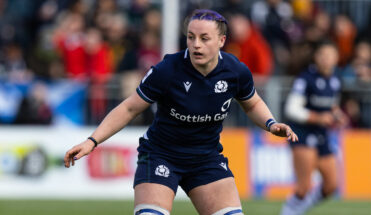
Ireland v Scotland Women | Preview
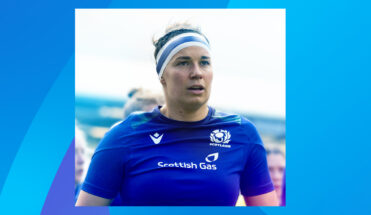
Podcast: Rachel Malcolm | One to one with Caroline Blair
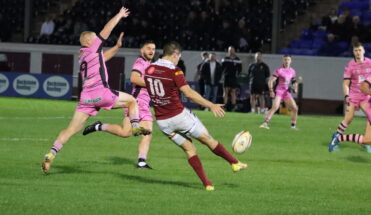
Guide to the Games | Round 2

WATCH LIVE: 2024 Silver Saturday

Silver Saturday preview: Scottish Cup final: Edinburgh Academical v Hawick
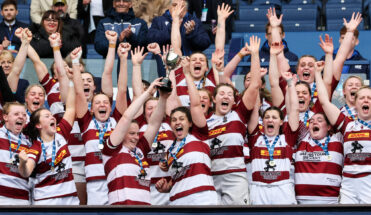
Silver Saturday preview: Sarah Beaney Cup: Watsonians v Hillhead Jordanhill
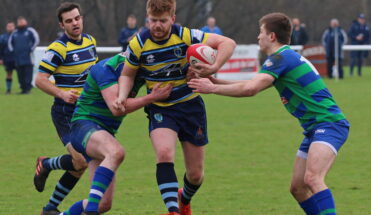
Silver Saturday Preview: Men’s League Cup final: Lasswade v Falkirk
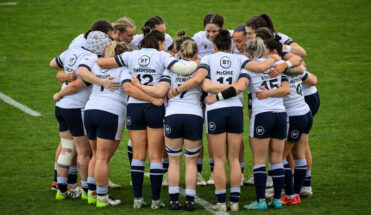

Watch: Rise Now | Bounce back in Parma
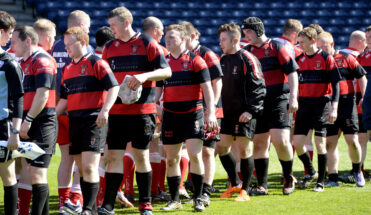
Silver Saturday Preview: Men’s Shield final: Cumnock v Moray





